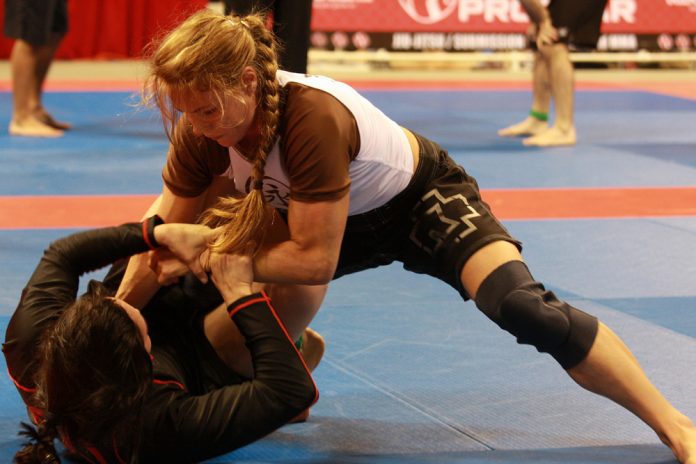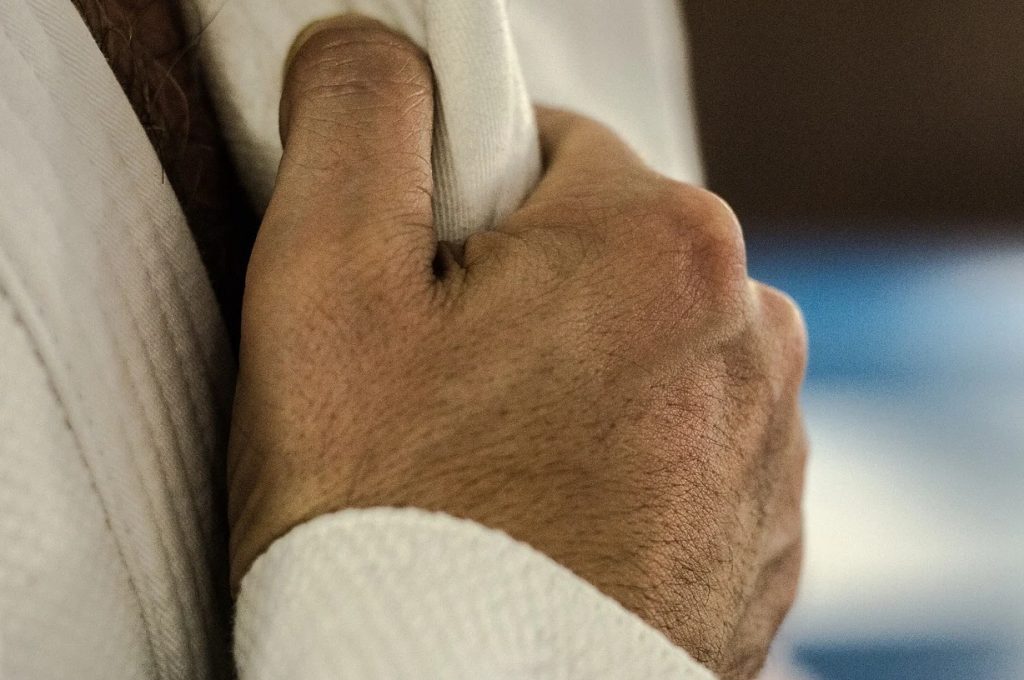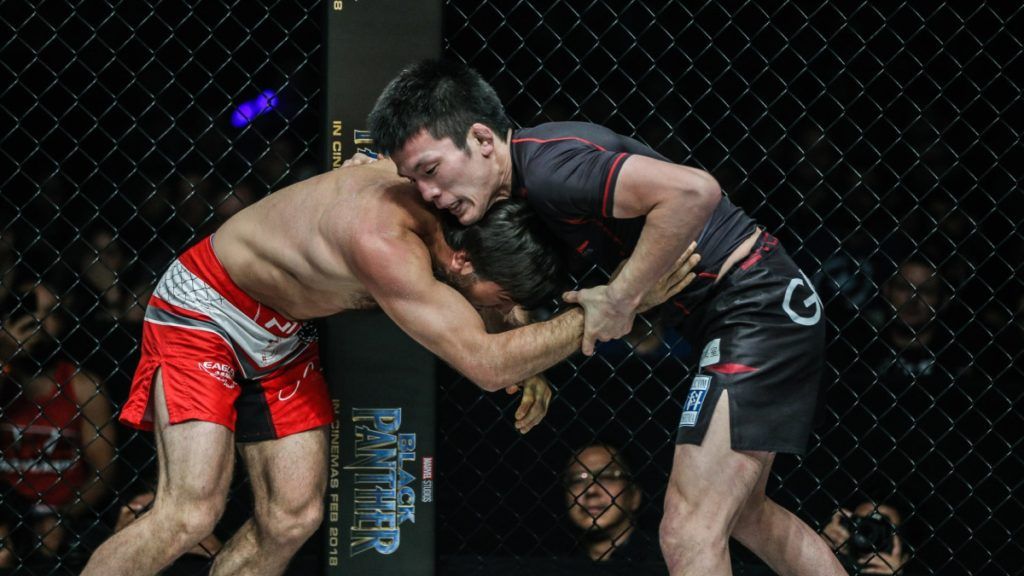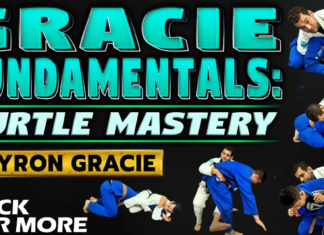
There’s a point in Jiu-Jitsu when you realize that gripping is actually half the puzzle. Inevitably, you go and try to figure out gripping and will get lost in a whole new world of grappling. Looking at Judo or wrestling to try and figure out how things work is what people usually do. It will yield results, but you can expect to spend a couple of years trying to figure out everything grip related. At least if you want to be any good at it. For most, this is not a very fun thing to do. Luckily, there’s a shortcut – focus on BJJ No-Gi grips. I took the longer route and went through a bunch of grip related stuff just to figure this one simple truth – No-Gi grips will teach you everything.
The first thing I really have to mention is that by saying use BJJ No-Gi grips, I mean use the mall the time. Gi, No-Gi, wrestling training, whatever you’re doing, do not grip the cloth. It is that simple. As you probably know by now, there’s no grappling without engagement, and grips mark the start of any engagement. Conversely, they happen to be the most important thing you can do, as wining a grip fight will really make anything you do next a lot easier to pull off. However, with all the possible grips, not to mention grip breaks, people often get confused and decide to just grip what they can without a clear purpose behind the grips. That’s a great way of ending up on the losing end in BJJ.
Why Do We Use Grips In Jiu-Jitsu?
Grips help us achieve two main things in Brazilian Jiu-Jitsu. First, they give us a connection to our opponent, which is crucial given that the goal is to grapple on the ground in order to achieve a successful pinning position, and ultimately, a submission hold. Second, we like to control how and opponent reacts by leveraging them into obedience, which again, is based on how we’re holding on to certain body parts of theirs. To achieve that, we have to use our hands, and to a lesser degree, our feet.

When it comes to controlling, things get a lot more specific. It is one thing to hold on to someone, preventing them from attacking you, or looking to transition into attacks. It is an entirely different thing to use grips in order to pin an opponent or finish a submission. Without grips, it would obviously be impossible to achieve this. So, given that there’s basically no way to grapple without grips, it is amazing that people take gripping for granted and just try to hold on to something. Winning the grip battle is winning half of the match, and if you can use purposeful, precise, and dominant grips throughout a match, you’ll easily end up submitting just about anyone. Of course, BJJ No-Gi Grips are the way to go, at least until you get eh hang of it. Let’s talk more about why this is the case.
Direct vs. Indirect Control
When we speak of control in Jiu-Jitsu, we all tend to have our own idea of what that actually refers to. However, there are some things that are universally true when it comes to control. Namely, controlling someone means that we’re either not allowing them to move a body part, or forcing them to move a body part against their will. In both cases, we need to be holding that body part with our hands in order to be able to even think about control. Going a bit deeper, the types of control you can gain in Jiu-Jitsu via grips are direct or indirect control.


Use Only BJJ No-Gi Grips For A Year
Here’s an experiment for you to consider. If you’re rolling with the Gi, focus on using nothing but BJJ NO-Gi grips for a year. Moreover, do not require the same from your training partners, or expect it from opponents if you happen to compete in that period. Let people grab your Gi, but use only BJJ No-Gi grips yourself. After a few months, you’ll surely notice a few things.
First of all, all your grips will provide you with a much better connection and much firmer control. You would be using wrist grabs, ankle grips, scoop grips, chin straps, S grips, Gabel grips, and everything else imaginable that doesn’t include you holding on to a Gi. The end result, though, will be an understanding of how BJJ control works particularly direct control. Once you get through a year of this, you could look to reintroduce Gi grips and try to figure out indirect control on the base of understanding direct control. That’s the easiest way to learn BJJ gripping without having to go through tens of hours of footage.
Apart from getting extremely efficient at gripping, you’ll also notice a few other benefits. Given that people will grab your Gi during this time, this creates an unfair advantage for them. Once you get comfortable with it, you’ll become a machine at breaking grips, particularly Gi grips. In other words, nobody will be able to hold you down. Also, when you reintroduce Gi grips in your game, it will be you who gains the unfair advantage even though you’ll both be gripping h Gi now.
Finally, there’s a very interesting hack in there as well. When someone is holding on to your Gi, they’re basically giving you control over their limb. Using the fact that the Gi moves a lot, simply let them hold on, by positioning the Gi in a way that gives them no control. That’ one grip out of the way, even though they’re holding on. Once again, you get the unfair advantage, while opponents aren’t even aware of it.
Final Thoughts
I have been using BJJ No-Gi grips exclusively for more than three years now. I wanted to reintroduce gi grips once I got the hang of it, but I just enjoy direct control too much. In No-Gi, this gives me the advantage of experience in this type of gripping. In Gi, it confuses opponents and lures them into thinking they have an advantage by grabbing the cloth. At a certain point in time, I will get back to Gi grips, but for now, BJ No-Gi grips seem to be doing the trick for me. Try it out for a year and see for yourself. It will completely change your game.


![Darce Choke Encyclopedia – Origins, Mechanics and Variations [2025] BJJ, choke, Brabo, BJJ Darce Choke, D'arce Choke, Darce BJJ Choke](https://bjj-world.com/wp-content/uploads/2017/11/JungPoirierLeeYahoo-218x150.jpg)









![Jiu-Jitsu For Old Guys Guard Retention Bernardo Faria DVD Review [2025] Jiu-Jitsu For Old Guys Guard Retention Bernardo Faria DVD Review](https://bjj-world.com/wp-content/uploads/2025/03/old-guys-guard-retention-bernardo-faria-dvd-review-218x150.png)
![X-Guard Trickery Kyle Sleeman DVD Review [2025] X-Guard Trickery Kyle Sleeman DVD Review](https://bjj-world.com/wp-content/uploads/2025/03/x-guard-trickery-kyle-sleeman-dvd-review-218x150.png)
![Countering with Crab Ride Anthony Budion DVD Review [2025] Countering with Crab Ride Anthony Budion DVD Review](https://bjj-world.com/wp-content/uploads/2025/03/countering-with-crab-ride-anthony-budion-dvd-review-218x150.png)
![Closet Closed Guard Craig Jones DVD Review [2025] Closet Closed Guard Craig Jones DVD Review](https://bjj-world.com/wp-content/uploads/2025/03/closet-closed-guard-craig-jones-dvd-review-218x150.png)
![Xanadu Back Takes Levi Jones-Leary DVD Review [2025] Xanadu Back Takes Levi Jones-Leary DVD Review](https://bjj-world.com/wp-content/uploads/2025/03/xanadu-back-takes-levi-jones-leary-dvd-review-218x150.png)










![Basic Closed Guard Jasmine Rocha DVD Review [2024] Basic Closed Guard Jasmine Rocha DVD Review](https://bjj-world.com/wp-content/uploads/2024/11/basic-closed-guard-jasmine-rocha-dvd-review-100x70.png)





![Essential Shin To Shin System Shawn Williams DVD Review [2025] Essential Shin To Shin System Shawn Williams DVD Review](https://bjj-world.com/wp-content/uploads/2025/01/shin-to-shin-system-shawn-williams-dvd-review-100x70.png)

![Breaking Their Guard Mikey Musumeci DVD Review [2025] Breaking Their Guard Mikey Musumeci DVD Review](https://bjj-world.com/wp-content/uploads/2025/02/breaking-their-guard-mikey-musumeci-dvd-review-100x70.png)

![Highlight Hip Throws Christian Ozbek DVD Review [2025] Highlight Hip Throws Christian Ozbek DVD Review](https://bjj-world.com/wp-content/uploads/2025/01/highlight-hip-throws-christian-ozbek-dvd-review-100x70.png)
![Henry Akins Black Hole No-Gi Closed Guard DVD Review [2024] Henry Akins Black Hole No-Gi Closed Guard DVD Review](https://bjj-world.com/wp-content/uploads/2024/09/henry-akins-black-hole-no-gi-closed-guard-dvd-review-100x70.png)
![Heavy Top Game Fabiano Scherner BJJ DVD Review [2025] Heavy Top Game Fabiano Scherner BJJ DVD Review](https://bjj-world.com/wp-content/uploads/2025/01/heavy-top-game-fabiano-scherner-bjj-dvd-review-100x70.png)
![No-Gi Grapplers Guide To Front Headlock Joel Bane DVD Review [2025] No-Gi Grapplers Guide To Front Headlock Joel Bane DVD Review](https://bjj-world.com/wp-content/uploads/2025/03/no-gi-front-headlock-joel-bane-dvd-review-100x70.png)
![The Closed Guard Malachy Friedman BJJ DVD Review [2025] The Closed Guard Malachy Friedman BJJ DVD Review](https://bjj-world.com/wp-content/uploads/2025/01/closed-guard-malachy-friedman-bjj-dvd-review-100x70.png)
![Higher Tripod Passing Craig Jones DVD Review [2025] Higher Tripod Passing Craig Jones DVD Review](https://bjj-world.com/wp-content/uploads/2025/02/higher-tripod-passing-craig-jones-dvd-review-100x70.png)

